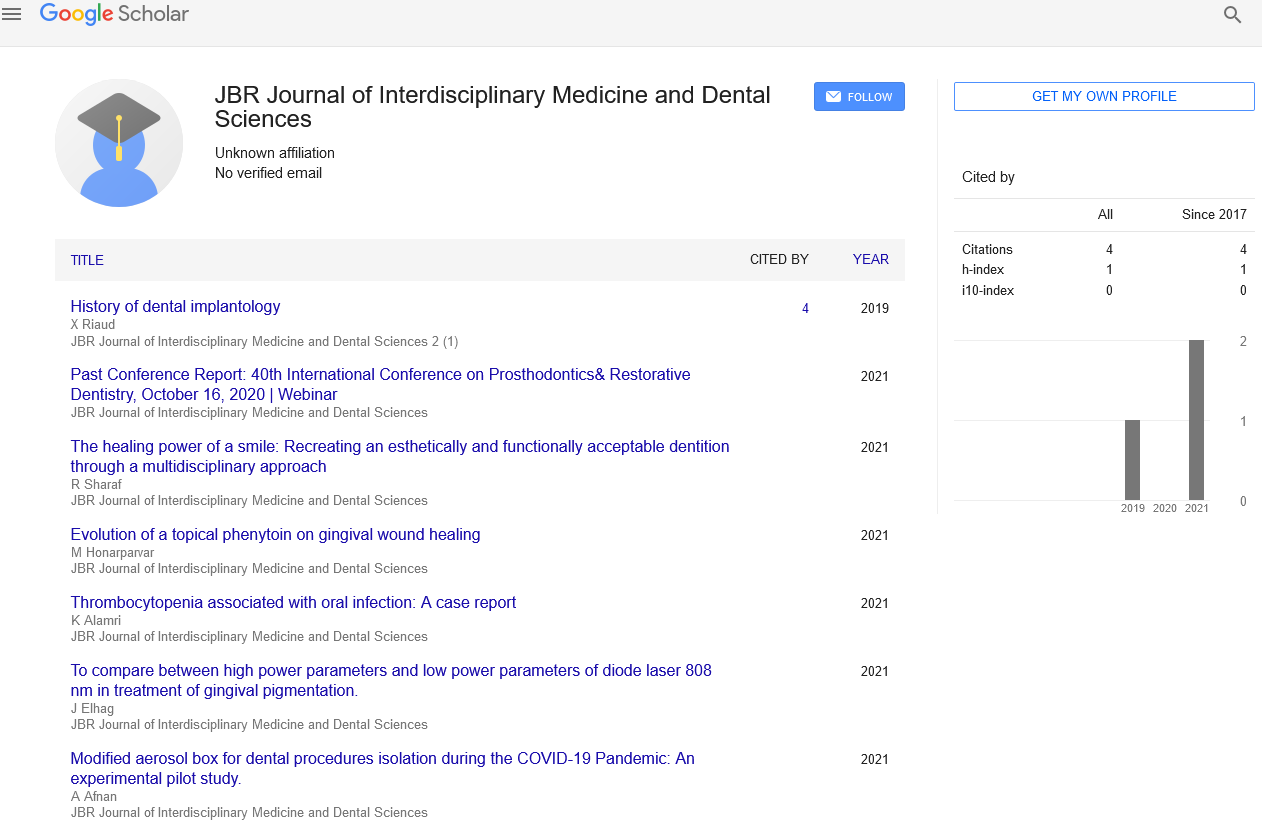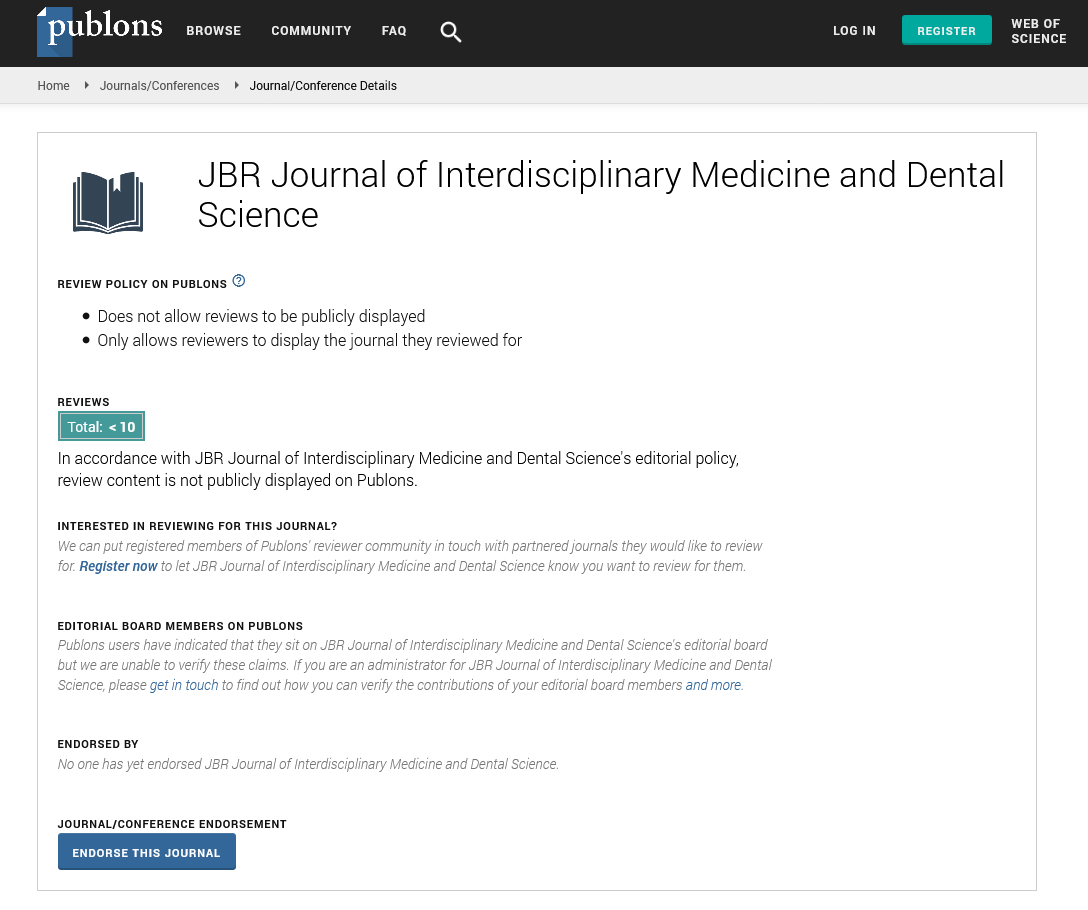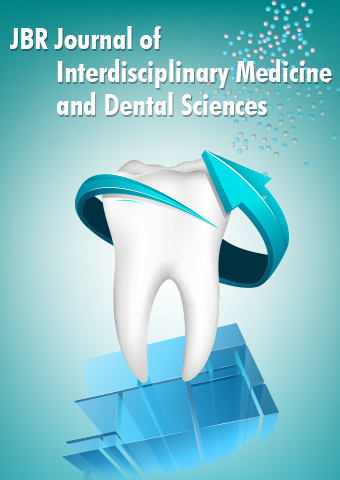Short Communication - JBR Journal of Interdisciplinary Medicine and Dental Sciences (2018) Volume 1, Issue 1
Assessment of morphometric variations of nasopalatine canal using Cone Beam Computed Tomography (CBCT)
Nikitha Yadav, V Mahalaxmi and C Vani
Sri Sai College of Dental Surgery, India
Abstract
Keywords:
Nasopalatine Canal (NPC), Cone beam computed tomography (CBCT), Sagittal section
INTRODUCTION:
Nasopalatine (NPC) is an important landmark in premaxilla region; it is located in midline between the central incisors. NPC is located beneath the incisive papilla, opening of the canal into oral cavity is called the incisive foramen (IF)/ foramen incisivum and the opening into nasal cavity is called Stenson’s foramina/ foramen nasalis (1-2). It connects the oral cavity to the nasal cavity. IF is an oval-shaped opening that faces the posterio-inferior side of the palate. It has a diameter of 2 mm to 1 cm. It is generally seen as large or small symmetrical oval, round or heart-shaped radiolucency. It rarely has a cortical border probably indicating the presence of nasopalatine cyst (incisive cyst) (3-4).
It is also an important landmark when it comes to the administration of local anesthesia in premaxilla region, because the incisive foramen (IF) marks the exit of the nasopalatine nerve which is the descending branch of the nasopalatine artery (5)Evaluation of size and morphology of NPC is important for planning oral surgical procedures performed on the maxilla such as apical resection of central incisors, enucleation of the nasopalatine canal cyst, surgically-assisted rapid palatal expansion, implant placement, periodontal flap surgeries, LeFort I osteotomy procedures. Recognition of NPC morphology and its variations prior to surgical procedures is important, because of the higher esthetic expectations in the anterior region of the maxilla. Therefore, morphometry and variations of NPC should be well known to prevent possible complications (6-8).
Three dimensional imaging methods come into forefront for accomplishment of surgical procedures. Cone beam computed tomography (CBCT) is one of the new technologies which provide three dimensional evaluation of object in different planes. It also utilizes less radiation when compared to tomography. For this reason a pre- operative CBCT study seems necessary for evaluating variables like shape, diameter and location of anatomical structures (9, 10).
Therefore, the purpose of this retrospective study was to analyze the morphological variations of NPC in maxillary anterior region using CBCT images.
Purpose of the Study
1. To evaluate the anatomical & morphological variations of NPC using CBCT
2. Gender comparison of NPC parameters.
MATERIALS & METHODOLOGY
The present retrospective study was conducted in the Department of Oral Medicine and Radiology, Sri Sai College of Dental surgery, Vikarabad, using CBCT images of 56 patients. The patients were aged between 18 and 55 years. Out of them 32 were male individuals and 24 were female individuals.
All CBCT images were obtained using “CARESTREAM 3D” machine with a standardized exposure protocol of 5 mA and 90 KVp and exposure time of 11 seconds with FOV of 10*10. The images were displayed using sagittal views and were analysed using “CS 3D imaging software.
Inclusion criteria: CBCT images taken for a variety of diagnostic and therapeutic purposes from a private diagnostic center at Hyderabad & Department of Oral Medicine and Radiology, Sri Sai College of Dental surgery, Vikarabad.
Exclusion Criteria
1. Presence of any fractures
2. Missing central incisors
3. Any Impacted teeth
4. Cyst or tumors of premaxillary region
Images were analyzed using “CS 3D imaging” software. The following parameters were studied in the present study:
1. Diameter of the foramen nasalis and foramen incisivum (The diameter of the foramen nasalis was measured at the nasal entrance of the NPC while the diameter of the foramen incisivum was measured at the oral entrance of the NPC). (Figure 1)
2. Shapes of the canal in sagittal plane (hourglass, funnel, conical, cylindrical). (Figure 2)
3. NPC length (The length of the NP canal was measured as a distance from foramen nasalis to foramen incisivum). (Figure 3)
Statistical Analysis: Data was entered and analyzed by using statistical software SPSS version 20.0. Mean and standard deviation was obtained for all measurements. Differences in measurements between men and women were compared using analysis of variance (ANOVA). P<0.05 was considered to be statistically significant for this study.
Results:
Results of measurements for morphometric parameters of NPC according to the gender are shown in table 1-2. NPC length was
more in men than in women. The mean length of NPC in women was 14.025mm ± 3.12 and in men the mean NPC length was 16.109mm ± 3.04 shown in table 1-2. The average length of NPC is 15.219 mm ± 3.22 with a significant difference between men and women. The average diameter of foramen nasalis and foramen incisivum in women were 3.66mm ± 1.14 and 7.23mm ± 1.75 respectively, whereas 3.534mm ± 1.17 and 6.07mm ± 2.33 were the mean values of diameter of foramen nasalis and foramen incisivum respectively. The mean diameter of foramen nasalis and foramen incisivum were 3.59mm ± 1.15 and 6.57mm ± 2.16 respectively and are almost equal in both the genders which is shown in table 3-5 Hourglass (19.6%), conical (19.6%), funnel (28.6%), cylindrical (32.1%) shapes were observed in sagittal plane. Cylindrical shape (32.14%) of NPC was more common in women followed by funnel shape (28.57%), hour glass (19.64%) and conical (19.64%). In men funnel shape (33.3%) was more common followed by cylindrical (23.3%), hour glass (23.3%) and conical (20%).
Conclusion
Knowing the canal shape, diameter and length of NPC are important issues for surgical intervention, esthetics rehabilitation and function with minimal complications in the maxillary anterior region. Our study highlights the variations of shape and measurements of NPC. The most common observations are cylindrical shape followed by funnel-shape, hourglass, and conical shapes of the NPC, Slant curved variation in sagittal section along with the average length of
NPC is 15.219 ± 3.22. The dimensions of foramen nasalis and foramen incisivum were 3.59mm ± 1.15 and 6.57mm ± 2.16 respectively. The results suggest insignificant relationship between NPC parameters and gender. Hence to validate the findings of the present study, a larger sample size should be taken.


